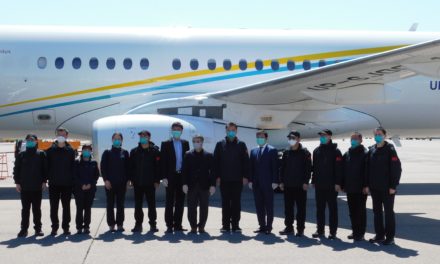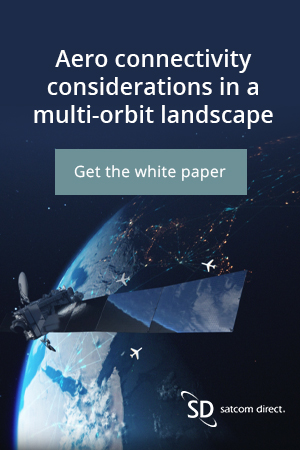By Iris Savage – © Gogo
It’s been a busy few months for Chris Moore. He spearheaded the sale of Satcom Direct to Gogo, an agreement finalized on 4 December 2024, transitioned his role as SD President to Gogo CEO, moved from Florida to Colorado, and settled his family into school and home life. He’s also rebranded the company, merging two of the business aviation world’s most familiar names into one, and confirmed PMA approval for the Gogo Galileo HDX antenna, bringing the multiple benefits of purpose-built business aviation low Earth orbit terminal technology and LEO satellite connectivity to the sector for the first time.
Blending distinctive, valued brands is always a challenge, yet it’s a hurdle that Moore faced with aplomb. «I wanted to move quickly because it is important our customers, partners, and suppliers understand that we are operating as a single entity,» explains Moore. «Even more importantly, I wanted our team to feel that they were unified by a common identity that reflects our strategic purpose to be the world’s only multi-orbit, multi-band connectivity provider delivering customizable connectivity solutions from a single resource.»
The result is a crisp new blue Gogo brand that reflects a forwardfacing company that embraces change through innovation to streamline business aviation connectivity. Moore emphasizes that customers welcome the concept of being able to make one call for all acquisition, management, and troubleshooting needs. «It’s an increasingly complex connectivity landscape, and we’re able to simplify the process for operators and owners around the globe.»

With the Gogo Galileo HDX PMA approval confirmed by the Federal Aviation Administration in March, the business aviation connectivity landscape was irrevocably altered forever for the better. The PMA approval was the catalyst for finalizing more than thirty Supplemental Type Certificates for different aircraft types in North America and Europe, with subsequent approvals coming from Brazil’s ANAC, Canada’s TCCA, and eventually all global bodies. «We’d been working towards this moment with our dealer and MRO network, and within two weeks of receiving the PMA, we had our first EASA STCs confirmed for Airbus ACJ319 aircraft and the popular Embraer Phenom 300 airframe and are seeing more confirmed every week.»
The small form factor of the half-duplex HDX antenna means that more aircraft owners and operators can benefit from high-speed satellite connectivity. This includes smaller airframes that were unable to support the weight of the heavier tail-mount antennas. The HDX will also add value to larger aircraft as operators are increasingly equipping more than one system to support redundancy and ensure sufficient data for multiple devices and users. The slightly larger, fullduplex Gogo Galileo FDX ESA is staying on its development track, and will also support high-speed, low-latency connectivity.

Gogo is now the only company in the world that can deliver uninterrupted global connectivity, even at the poles and in congested areas, to such an extensive range of aircraft sizes for an at-home digital experience in the air. «Gogo and Satcom Direct synergies have resulted in a truly unique and customizable product and service portfolio. Our ability to combine GEO with LEO, LEO with ATG, or whatever combination the client needs, stands us apart from any other provider, whether for business aviation, heads-of-state, or military forces,» says Moore. The technology is also future-proofed, making upgrade paths simple, requiring minimal downtime, and can be tailored to ensure customers have the experience they expect whenever they fly.
With new constellations coming online, capacity will not be an issue, yet Moore thinks it will just get more confusing for the end user. «Starlink is already active, although it’s a consumer-grade option and shares capacity with many sectors. Kuiper is deploying its first satellites, and Telesat is in the final stages of development. Air time suppliers to our customers are also investing with Intelsat recently increasing its data-transfer speeds Viasat, adding dual polarity satellites, and Eutelsat OneWeb already ordering replacement satellites to replenish its network in the coming years. In North America, we’re close to upgrading our Gogo Air-to-Ground system and adding 5G capabilities. For customers, it is exciting and bewildering in equal measure, and that’s where we fit in as we support their connectivity journey by helping them make informed decisions to ensure they receive the connectivity experience they expect and want.»









